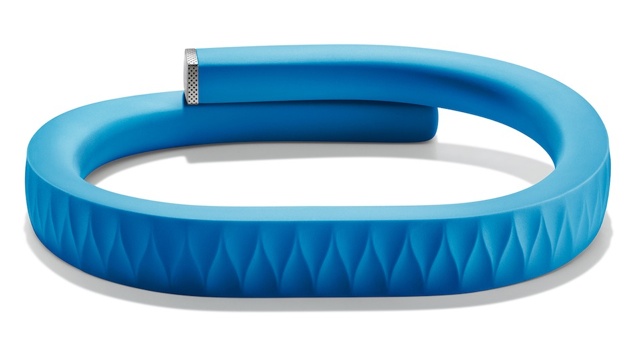Jawbone is doing something a lot of developers will probably be interested in, by opening up the UP fitness tracking wristband as a platform play, with an open API coming soon. Jawbone’s new version 2.5 update for the iOS UP app allows you to integrate with IFTTT, MapMyFitness, Withings, Sleepio, Wello, RunKeeper, Notch.me, Maxwell Health, Lose It!, and MyFitnessPal.
The new integrations mean that data gathered from those apps and devices like the Withings Smart Body Analyzer can now be pulled into the UP app itself, and combined with information gathered from the Jawbone wristband to provide a more complete picture of a user’s health. The IFTTT integration can be used to help you create your own motivational alerts when you’ve been inactive for too long, or to brag when you’ve blown past your daily step count goal.
The information from the UP can also go out to some specific apps, providing them with data on your sleep patterns and daily movement activity. And this is just the start: Jawbone is starting things off with a few select partners, but after that it intends to open up the API for any developers interested in building Jawbone UP integration into their own apps.
“We are now unstoppable in terms of leadership in today’s market,” explained Hosain Rahman, Jawbone CEO. “The platform we see the API is the first step of that; a limited set of partners with unique experiences, but the whole experience is much deeper.”
Jawbone made its reputation on building Bluetooth products like stereo headsets and earpieces, but then moved into audio equipment like the Jawbone speakers and health monitoring devices like the UP. Other competitors in the space have already moved to open up third-party integrations, like the Nike+ Fuelband, which plugs into Path and Lose It! Jawbone’s platform plans are much broader and deeper than the ones of some of its competitors, however, according to Rahman.
“A lot of these platform announcements like API releases are more PR than they are actual real developers on a platform building value for users,” he said. “We spent a lot of time sitting with developers, looking at what they can enable, what their data structure was, how to pull their experience back into UP, how you really create robustness around them, how to build APIs that work dependably and how we can make sure users can get this stuff.”
This should open the door for a much more holistic picture of personal health, available across a wide range of devices. Individually, these devices have been doing well, but the real opportunity is when apps and hardware start working with one another. Jawbone is taking a great first step towards that end with this API release, but it’ll be interesting to see how the UP platform handles normalizing a huge volume of data from a wide variety of partners in a way that doesn’t overwhelm individual users.
